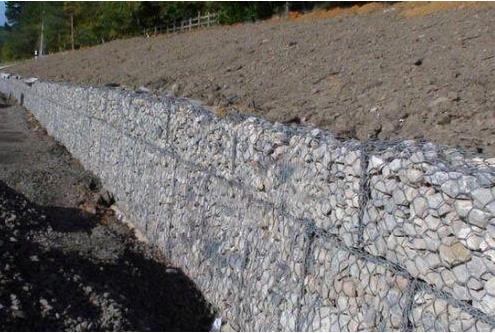when to use geogrid in retaining walls
Geogrid is often used in the construction of retaining walls to provide reinforcement and stability to soil and other materials. There are several situations in which geogrid may be particularly useful in retaining wall construction:
- When the soil is prone to movement or instability: If the soil behind a retaining wall is prone to movement or instability, using geogrid can help to provide additional support and reduce the risk of failure.
- When the retaining wall is tall or will be subjected to large loads: Geogrid can provide additional reinforcement to a retaining wall, allowing it to withstand larger loads and resist deformation. This can be particularly important for tall retaining walls or walls that will be subjected to large loads, such as those supporting a roadway or other structure.
- When the retaining wall is being built on a slope: Geogrid can help to stabilize the soil on a slope, reducing the risk of erosion or landslides.
- When the retaining wall is being built in an area with poor soil quality: In areas with poor soil quality, geogrid can help to provide additional reinforcement and stability to the retaining wall.
It is always a good idea to consult with a professional engineer or contractor before deciding to use geogrid in a retaining wall project, as the specific needs and requirements of the project will determine whether or not it is appropriate.

geogrid retaining wall design example
Here is an example of a geogrid retaining wall design:
- Determine the purpose of the retaining wall: The first step in designing a geogrid retaining wall is to determine the purpose of the wall, such as to hold back soil or to support a structure. This will help to determine the size, shape, and other characteristics of the wall.
- Select the appropriate geogrid: Based on the purpose of the retaining wall, select a geogrid that is suitable for the specific application. Consider factors such as the type of soil and other materials that the wall will be holding back, the size and shape of the wall, and the required tensile strength of the geogrid.
- Determine the size and shape of the wall: The size and shape of the retaining wall will depend on the specific needs of the project. Factors to consider include the height of the wall, the width of the base, and the slope of the backfill material.
- Select the appropriate backfill material: Choose a backfill material that is suitable for the specific application. This may be soil, gravel, or another type of material.
- Install the geogrid: Install the geogrid according to the manufacturer’s instructions and local building codes. The geogrid should be placed in layers, with the fibers running parallel to the wall.
- Backfill and compact the material: Once the geogrid is in place, backfill the area behind the wall with the chosen material and compact it to ensure that it is properly supported.
- Finish the wall: Depending on the specific needs of the project, the retaining wall may need to be finished with a facing material, such as concrete or stone.
This is just one example of a geogrid retaining wall design. The specific details of the design will depend on the specific needs and requirements of the project. It is always a good idea to consult with a professional engineer or contractor to ensure that the retaining wall is designed and constructed safely and effectively.
